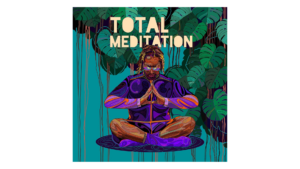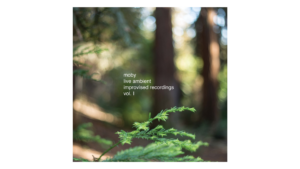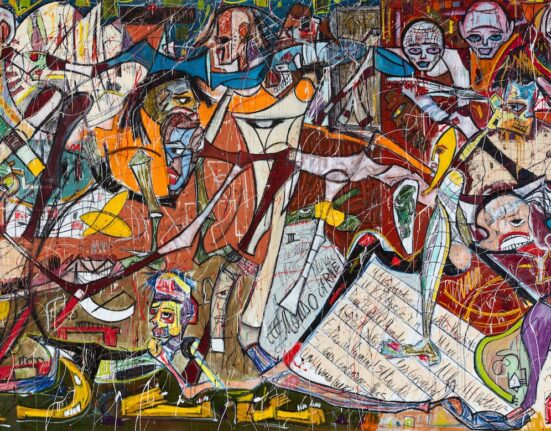“], “filter”: { “nextExceptions”: “img, blockquote, div”, “nextContainsExceptions”: “img, blockquote, a.btn, a.o-button”} }”>
Heading out the door? Read this article on the new Outside+ app available now on iOS devices for members!
>”,”name”:”in-content-cta”,”type”:”link”}}”>Download the app.
You may not give much, if any, thought to the musicians who created the meditation music you listen to. I know I certainly didn’t. Well, not until I learned that there are mainstream artists who dabble in the meditation music space themselves.
And, yes, while the intention behind meditation is to draw attention inward and detach from the external world, it can be pretty cool to find meditation music made by artists whose more popular songs might already live in my “Liked” playlist on Spotify.
These five musicians created meditation albums that, in most cases, veer pretty far off from the types of music they normally record. I listened to five albums to experience the wide-ranging talents and deeply set intentions behind the popular artists who made them.

1. Lil Jon
Despite the name of his ubiquitous party song “Turn Down for What,” rapper and record producer Lil Jon isn’t a stranger to getting quiet and making space for his emotions.
Lil Jon told NBC news that he keeps to himself before his shows. “It’s funny when people come in the dressing room sometimes, they’re like ‘Is he okay?’ And people are like, ‘No, he’s good.’ And I’m just really mentally preparing myself for getting on that stage,” he said.
“Here is a way for you to put health, and well-being, and positive things out into the universe,” said Lil Jon of the opportunity to make Total Meditation to help himself and others.
Lil Jon collaborated with Grammy-winning producer Kabir Sehgal to create the album, which is 11 tracks and an hour and 46 minutes long. Titles of songs like “Nurture Friendships” and “Coping With Grief” make it a menu of self-care, as you can pick which category would best serve you in the moment.
Listening Notes
Because Lil Jon is, well, Lil Jon, I thought this album was going to be more musical. (Yes, I may have eagerly anticipated a wind chime version of “Get Low.”) But I was wrong. Once I got past my assumptions about what this album was going to be, I was able to really enjoy everything it is.
Lil Jon speaks calmly and evenly throughout each track, with light ambient music in the background. He is a co-meditator, offering assurance (“It’s okay if your mind gets distracted… mine does, too”) and hope (“It may take a while, but a brighter day is on the horizon”).
I don’t normally listen to guided meditations, so it’s surprising to me I was so easily able to listen to nine out of the 11 songs on this album without interruption, emerging afterward from my reclined position like a bear from hibernation.
As I listen to Total Meditation, it occurs to me that I’m hearing the same voice that was part of the soundtrack to my college party years, aka, “Shots.” But instead, the voice is now the wise influence, shepherding me into feeling what is present in my mind and body, as he does in “Relieve Anxiety.” This really made me appreciate myself and Lil Jon for our evident journeys of emotional growth.

2. Alanis Morissette
The fact that Alanis Morissette came out with an album of meditation music in 2022 is anything but ironic. (Sorry not sorry for the obvious pun.)
In all seriousness, the Canadian singer and songwriter has been sweeping fans into her fun, furious, dramatic, and deep investigations into life, love, and loss for decades. The Storm Before the Calm feels like the start of a new chapter, or even a new book altogether. Musically, it contains the raw highs and lows that are reminiscent of Morisette’s unique style—only now we rely on the instrumentals to tell the story and not her usual witty lyrics. (Alanis does perform vocals on the album, however.)
Morisette shared more about the album on Mayim Bialik’s Breakdown podcast. “What the meditative invitation really is, is ‘Can we be with what’s going on in this moment?’” the singer shared. “I always feel like resting is enlightenment.”
Listening Notes
Interestingly, The Storm Before the Calm is 11 tracks and an hour and 46 minutes long (which, I’m assuming by coincidence, is the same number of tracks and same album length as Lil Jon’s Total Meditation… I’m freaking out!!).
I decided to listen to Morisette’s album while at work. Things got interesting.
I didn’t look at the names of the songs as they played, but the ambient noises (coming from any of a million different instruments Alanis’s team used to create the album) had unexpected effects. Instead of staying glued to my computer monitor and typing literally as fast as I can—some unconscious work-from-home habits I’ve adopted—I was inspired to sit back and take in the swirling sounds emanating from my laptop in between keystrokes.
During “Heart—Power of a Soft Heart,” I sat back in my chair, looked out my open window, and noticed the lovely sound of some birds chirping nearby. During “Explore—The Other Side of Stillness,” I closed my eyes and felt how uncomfortable it was being in my body because of all the caffeine I had consumed. (Normally, I wouldn’t notice that before pounding down another coffee.) I even lit a candle in the middle of the afternoon!
“I don’t know what’s happening, but I like it,” I thought. Having the album as the backdrop to my workday made little things seem more ceremonial, more sacred.
Don’t get me wrong—the album isn’t all butterflies and rainbows. There were some sounds that I’d call unsettling, some magical, some whimsical, all other-worldly. But now that I think about it, that’s really what meditation is like, too. That’s what exists inside all of us.

3. Seal
If you only know Seal for his iconic song “Kiss From a Rose,” well, you’re probably still having a good time listening to that. I can’t knock a classic.
But there’s more. Spiritual teacher and Kundalini yoga Guru Singh released Game of Chants, collaborating with Seal on each of the eight songs. The album is a beautifully written, composed, and sung collection of meditative pop folk music.
It’s not a typical meditation album. But this compilation of songs captures the uplifting nature of yoga, meditation, and spirituality in a way that celebrates and relishes in what it means to be human and to live on earth. (Can you tell I’m listening to it as I write this?)
Listening Notes
The first time I heard the second track on Game of Chants, “I Am,” I was in a Gentle Yoga class. As the teacher was cueing the class out of Low Lunge, she asked us, “Do you guys know who’s singing this?” No one answered. “It’s Seal!”
“Really?!” I said, equal parts impressed and out of breath as I shifted into Plank. Since then, I’ve listened to “I Am” while driving, dancing, and going about my life—rarely resisting the urge to sing along.
If you’re like me and you usually prefer your personal meditation sessions to involve lots of movement, from subtle and slow to big and flailing, this is the album to play. Each one has enough lyrical repetition to get you into that meditative state, but the songs are also bangers. “Wahe Guru” has a head-bopping guitar solo that kinda makes me feel like I’m at a rock concert.
“I am who I am, that is that,” is repeated countless times throughout, in some verses capped off with, “Thank God, I am.” It never fails to bring tears to my eyes when I pause long enough to consider the words long enough. They’re a refreshing reminder that we can—and should— thank the powers that be that we are who we are. Without any conditions, expectations, or obstacles.

4. Lou Reed
Most people know Lou Reed as the original singer and guitarist in the Velvet Underground or from his solo works (“Walk On the Wild Side”). What people may not know is that Lou Reed made a meditation album, Hudson River Wind Meditations in 2007, six years before he died in 2013.
The album wasn’t originally intended to be released to the public. Reed simply wanted to make music to accompany his tai chi practice. The album consists of four songs and the run-time is an hour and seven minutes. (The first two songs are the lengthiest, hovering around 30 minutes each.)
It has now become the stuff of creative lore that Reed held a microphone out of his window to record the Hudson River, making it into one of the instrumentals on this album.
Listening Notes
I would say Lou Reed understood the assignment of making meditation music. In the first track, “Move Your Heart,” there’s a single swooping tone that moves in and out like breath. It’s definitely the kind of repetition one would expect in this genre, but perhaps a little too repetitive for my taste.
I then corrected my initial mistake of listening to this album from the speaker of my iPhone—sorry, music fans—and charged up my noise-canceling headphones for the occasion. This changed things. Suddenly the swooping sounds felt more like movement, although I was lying completely still. (I can see how this song would be a good soundtrack for tai chi.)
In “Find Your Note,” some of those notes had me wondering whether my tinnitus was acting up. A Pitchfork review describes these high-pitched sounds as “a chorus of worried tea kettles, maybe, or a very lonely spaceship whistling to itself, long after its crew has died.” Which is more eloquent than what I said. Still, I felt like this song had texture, created by these really low vibrations throughout.
My favorite track was the titular Hudson River Wind. It’s very white noise-esque—at times I felt I was in nature, near the sound of crashing waves; other times, I was in a car speeding down a highway hearing the whoosh of the world passing by outside an open window. With headphones on, it’s a full-body experience. Once I got the chills, they remained for the rest of the song. It’s the shortest and, in my opinion, sweetest track.

5. Moby
New York City artist Moby became widely popular in the 90s for his electronic dance music (“Go”). His music is mostly light on vocals, but heavy on beats and polyphonic instruments.
Interestingly, one could argue Moby’s music has always had a meditative aspect to it. Electronic music often has little variation, a steady beat, strong bass, making it automatically pretty danceable. There have even been studies on the meditative quality of raves that play electronic dance music (EDM), which can switch the nervous system into a parasympathetic state.
Moby seems to have more intentionally explored ambient sounds in his music throughout his career, appropriately naming these collections Ambient (1993), Hotel Ambient (2015), Long Ambients 1: Calm. Sleep (2016), Long Ambients Two (2019), Live Ambient Improvised Recordings, Vol. 1 (2020), and Ambient 23 (2023).
Behind the scenes, Moby has worked with talent from Britney Spears and Daft Punk to David Bowie and Guns N’ Roses.
Listening Notes
Have you ever set out to do a moving meditation but then the music is so juicy that your muscles are able to relax and you sink into your mat as if it’s a soft, fluffy couch and just go with the flow? That’s what I experienced when I listened to “Ambient 6.” Unlike a lot of the other meditation music I’ve heard, this track feels unprocessed and uncomplicated. A simple piano is the dominant sound; the melody is so straightforward that I felt as though I was listening to a single melodic narrative with no particular plot. Halfway through listening, as often happens with meditation, a pleasant memory of mine was unlocked. It was something I hadn’t thought about in years, and its reappearance felt like a reward for taking time and being present with myself.
After “Ambient 6” ended, I circled back to “Ambient 1.” The two are similar in that they’re both instrumentally uncrowded and piano-forward, although “Ambient 1” is a few octaves higher and thus has a brighter and more wide-open feel than its sibling song.
The songs on this album aren’t asking you to feel something in particular, which is refreshing. Though it’s sometimes liberating to listen to serious songs when I’m upset—I’ve cried to Taylor Swift’s sad tracks as much as the next person—there’s a special quality about the songs on Live Ambient Recordings that make them seem like a blank canvas. I didn’t really know what I was feeling when I started my listening experience, but the “Ambients” on this album played as a supportive soundtrack to bear witness to whatever came up. When my sadness had moved through me, the songs still made sense against my stillness, my contemplation, and eventually, my feelings of renewal.







